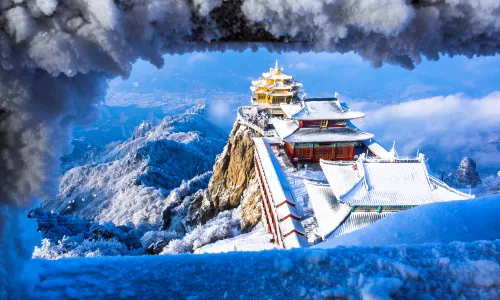Xichuan

Destinations
Nearby Cities
Nearby Cities
- 4.7/58.517.39Luanchuan.Laojunshan Scenic Area68.5 km from XichuanHighlights:Cable car & hike to peakRich geological sites with caves & peaksSaved by 730 users9845 positive reviews
- 4.5/58.052.17Danjiangkou.Wudang Scenic Spot/Wudang Dream85.1 km from XichuanHighlights:From base to Golden SummitThrilling cliffside incense experienceSaved by 418 users7834 positive reviews
- 4.4/57.1Xiangyang.Gulongzhong/Hubei College of Arts and SciencesMore than 100 km from XichuanHighlights:Lush forest & 1,004 ft peakHistorical reenactment & performance2545 positive reviews
- 4.4/57.210.87Xiangyang.Xiangyang Ancient City/China Tang TownMore than 100 km from XichuanHighlights:Watch Tang Dynasty Dream ShowLive Tang Dynasty show regularly4001 positive reviews
- 4.7/59.017.79Luoyang.Longmen Station/Municipal governmentMore than 100 km from XichuanHighlights:View grottoes on 1 km of cliffs along the Yi River1 km cliffs & grottoesSaved by 1553 users42775 positive reviews
- 4.5/57.139.13Luoyang.Longmen Station/Municipal governmentMore than 100 km from XichuanHighlights:Immersive Luoyang culture experienceDigital effects show Luoyang's historySaved by 142 users1508 positive reviews
- 4.7/57.6Luoyang.Longmen Station/Municipal governmentMore than 100 km from XichuanHighlights:Showcasing museum's top treasuresBuilding shaped like a cauldronSaved by 288 users2423 positive reviews
- 4.7/57.09.88RuichengMore than 100 km from XichuanHighlights:Young team’s 9-year relocation miracleVast architecture & exquisite murals945 positive reviews
- 4.5/57.0Luoyang.Longmen Station/Municipal governmentMore than 100 km from XichuanHighlights:Butterfly garden & museum rich in culture6 areas with 200,000 peonies in bloomSaved by 124 users5406 positive reviews
- 4.4/57.611.46Luoyang.Old Town CenterMore than 100 km from XichuanHighlights:360° panoramic ancient gate display3D show of ancient capital's historySaved by 387 users2713 positive reviews














